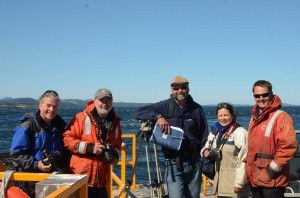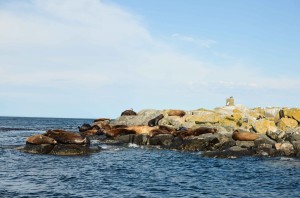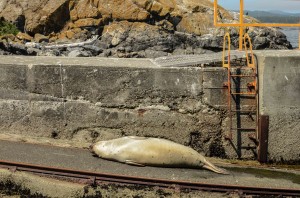On Thursday we had a visit from Discovery Channel who were working with the Ogden Point Dive Centre (based out of Victoria) to film and document sea lions and seals on the reserve. They asked questions about the sea lions’ migration patterns and the role of Race Rocks as a reserve among others. The footage will be used as part of The Blue Realm series, by Danny Mauro.
The California sea lions moved onto the main Rock last week, and the Stellars have joined in the last few days. Currently, approximately 30 are resting on the rock and in the water. Misery, our largest resident male, left last week and has not returned or been spotted on the other rocks. The female in the last post has also left. However, on Saturday, a different young female was resting on the jetty. Unfortunately, I did not notice she had a tag on her back fin until she was swimming away and it was too late to mark down.




